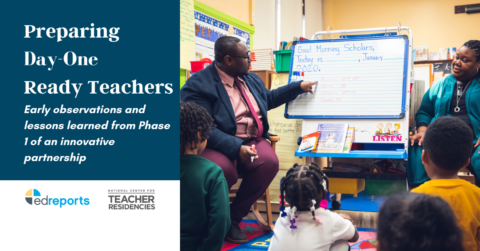Developing Expertise in Quality Curriculum Made Me a Better Teacher
Tyler Cronin shares his journey as an EdReports reviewer and how collaborating with fellow educators has impacted classrooms across Nebraska.
Related Resources
article
How I Let My Light Shine on Behalf of Students
Educator Dr. Erika Henderson shares her leadership journey and how she seized opportunities to learn how to better advocate for her students.
video
How I Used EdReports to Advocate for High-Quality Materials
Educator Steve Lebel shares how he advocated for high quality instructional materials and inspired his colleagues to do the same for their students.
article
Preparing Day-One Ready Teachers
The National Center for Teacher Residencies and EdReports highlight Phase 1 learnings from an innovative new pilot program to infuse curriculum literacy into teacher preparation.


